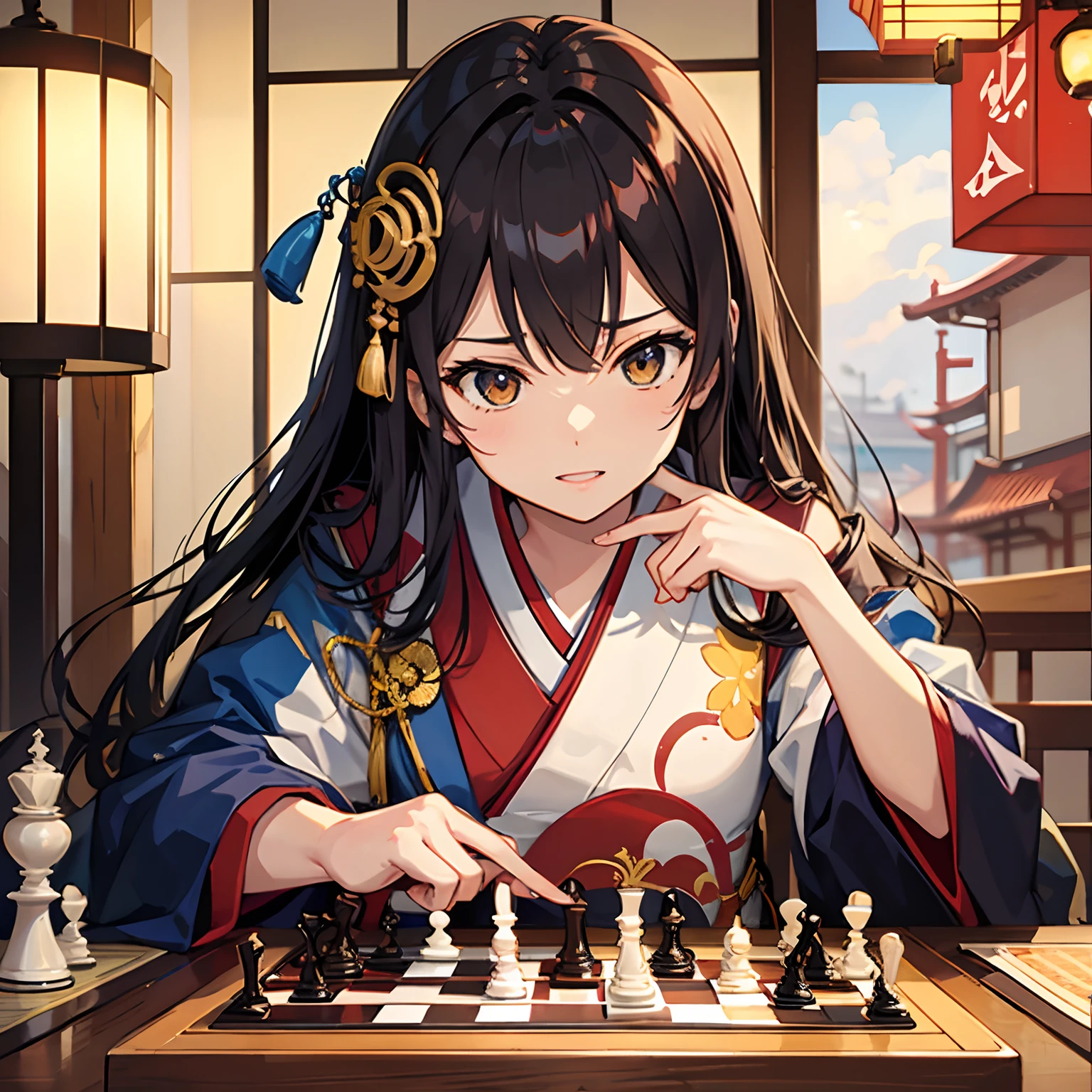Chessboard and Setup:
The game is played on an 8x8 square board with alternating light and dark squares.
Each player starts with 16 pieces: one king, one queen, two rooks, two knights, two bishops, and eight pawns.
The pieces are set up on the board as follows:
Rooks go in the corners.
Knights are placed next to the rooks.
Bishops are placed next to the knights.
The queen starts on the remaining square of her color (white queen on a white square, black queen on a black square).
The king starts on the last remaining square next to the queen.
Pawns occupy the second row for white and the seventh row for black.Movement of Pieces:
King: Moves one square in any direction (horizontally, vertically, or diagonally).
Queen: Moves diagonally, horizontally, or vertically in any direction across any number of squares.
Rook: Moves horizontally or vertically across any number of squares.
Bishop: Moves diagonally across any number of squares.
Knight: Moves in an L-shape, two squares in one direction and then one square perpendicular to that.
Pawn:
Moves forward one square, but on its initial move, it has the option to move forward two squares.
Captures diagonally but moves forward.Objective:
The objective of chess is to checkmate the opponent's king.
Checkmate occurs when the opponent's king is under attack (in check) and cannot escape capture on the next move.Special Moves:
Castling: A king moves two squares towards a rook, and the rook moves to the square next to the king. Conditions: Neither piece has moved before, there are no pieces between them, and the king is not in check or doesn't move through a square under attack.
En Passant: A pawn capturing a pawn that has moved two squares forward from its starting position. This capture must be done immediately after the opposing pawn's double move.
Pawn Promotion: When a pawn reaches the opposite end of the board, it can be exchanged for a queen, rook, bishop, or knight.Other Rules:
Check: When a player's king is under direct attack by an opponent's piece.
Stalemate: If a player has no legal moves and their king is not in check, it's a stalemate, resulting in a draw.
Draw: Can occur due to insufficient material, threefold repetition, the fifty-move rule, or mutual agreement.These rules lay the foundation for the complex and strategic game of chess, providing the framework for players to engage in a battle of wits and tactics on the chessboard.
